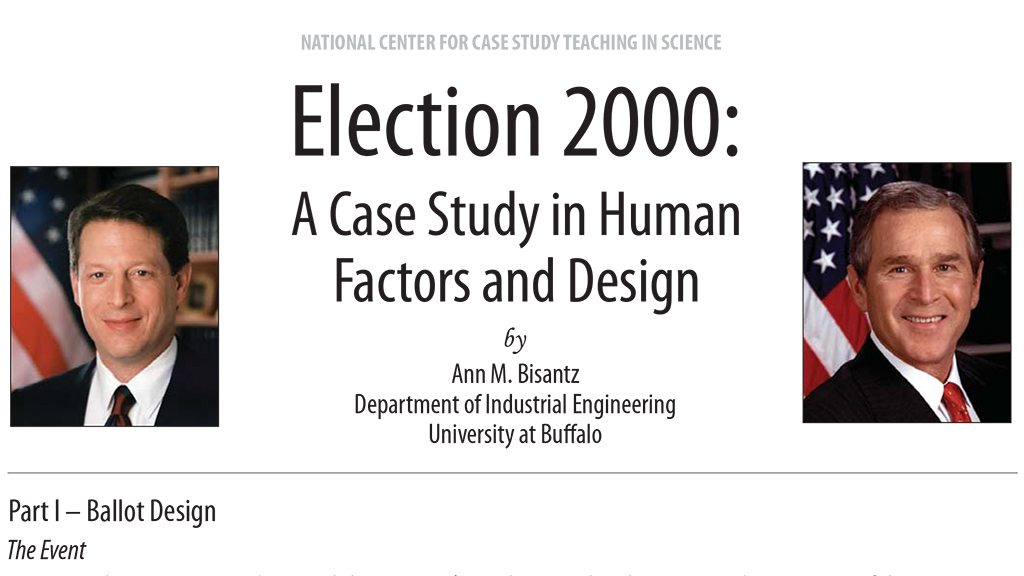Abstract
The controversies surrounding the November 2000 presidential election, specifically the difficulties encountered in interpreting imperfectly punched ballots, provide the backdrop for this case. Developed for an upper-level undergraduate course in human factors/ergonomics, the goal of the case is to help students recognize how engineering solutions can be brought to bear to solve problems of national importance. The case would also be appropriate for use in an upper-level undergraduate course in human-computer interaction or user centered design.



